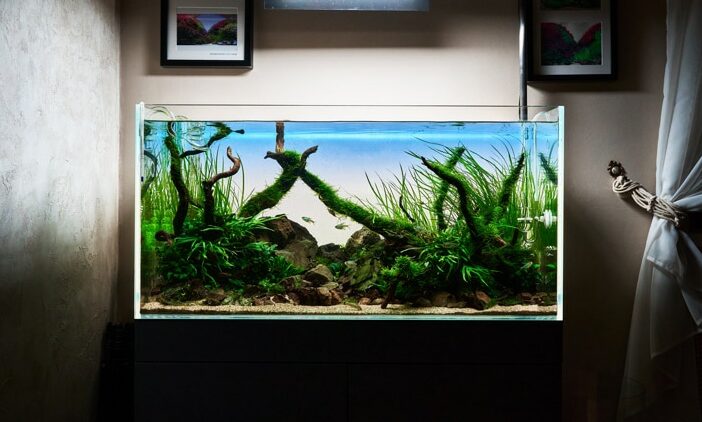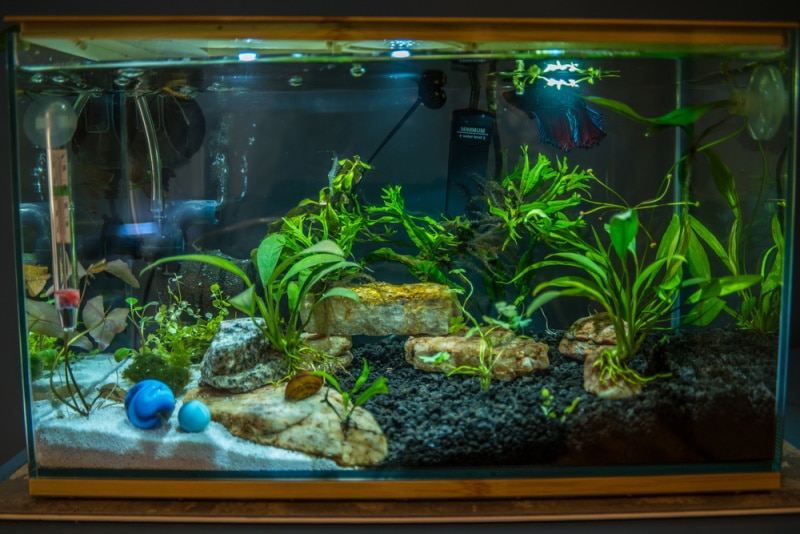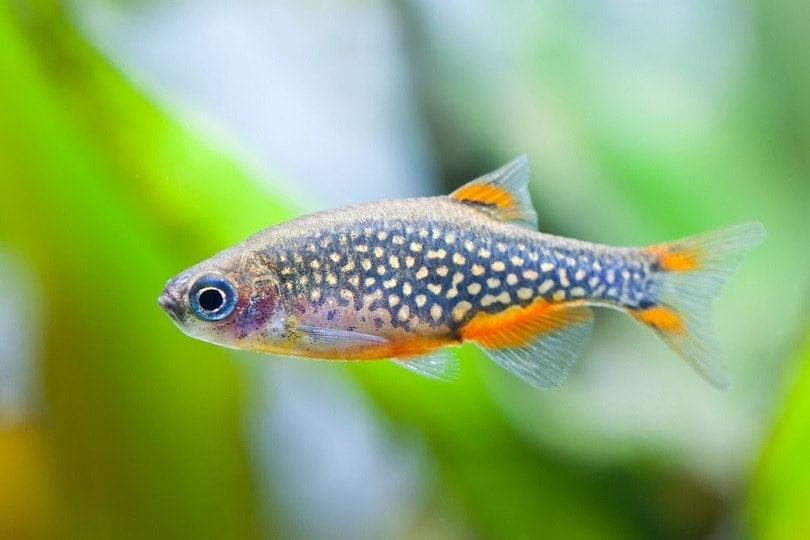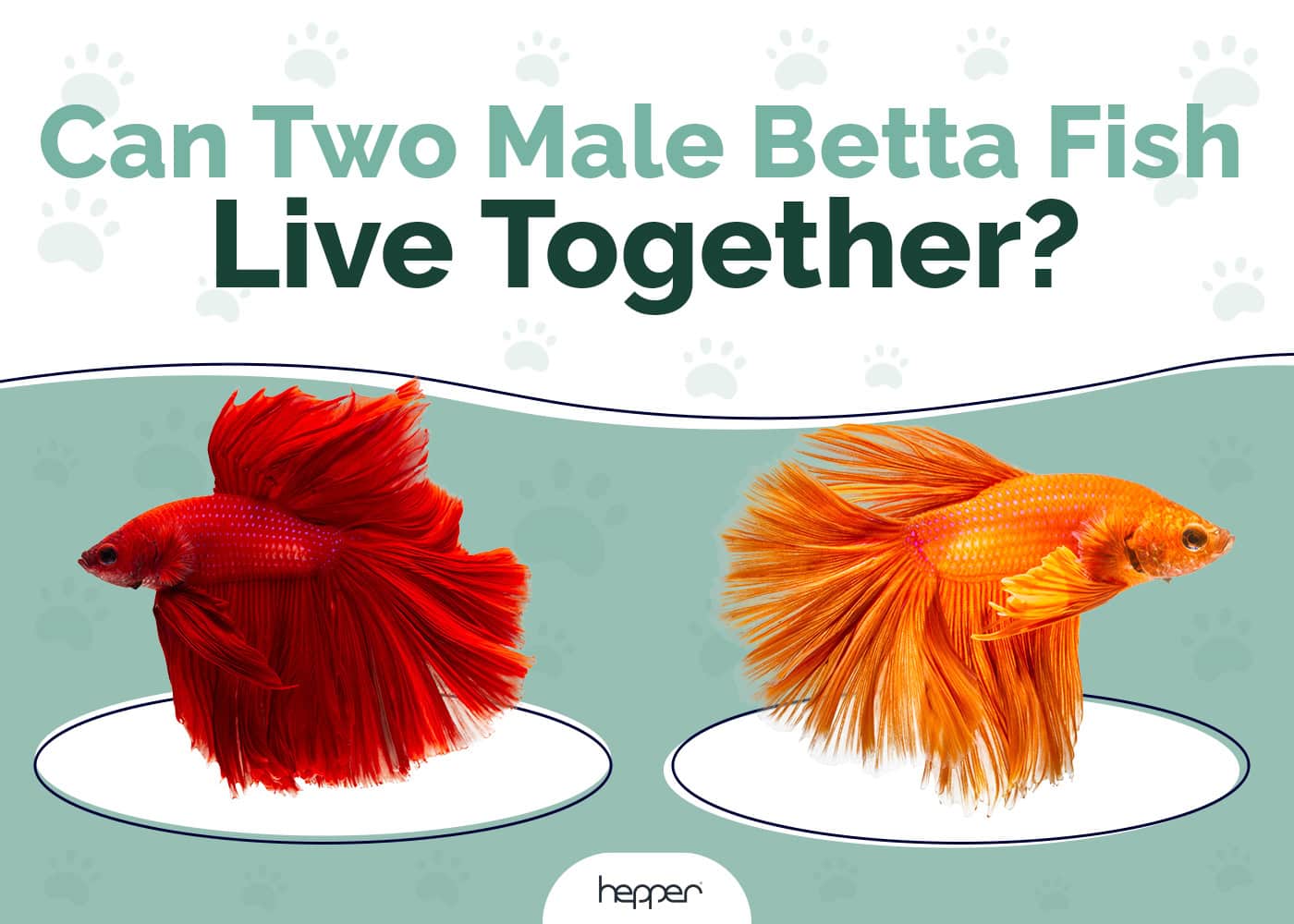16 Freshwater Fish That Eat Snails (with Pictures)
Updated on
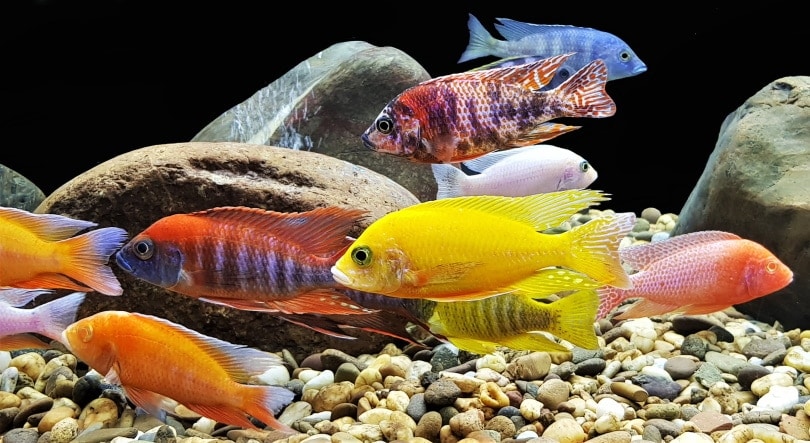
A pest snail infestation is quite a common problem in most home aquariums. Snails are known for having rapid and uncontrolled breeding rates and a few snails can turn into hundreds within a few months. This is a dreaded problem for aquarists that use live plants and other natural items in the tank or pond.
Snails hitchhike on these plants as eggs or hatchlings and can remain undetected as they enter the new body of water.

The 16 Freshwater Fish That Eat Snails
The following fish have been identified as effective snail eaters that can be kept in both ponds and tanks by many experienced fish keepers. Keep in mind you should only add these fish into the tank if the conditions allow it. This is because most of them are large and can grow to extreme sizes. The tank or pond should be large enough to cater to their size. Some of the fish are better for nano tanks, whereas some should only be kept in a large tank or pond.
1. Clown Loach
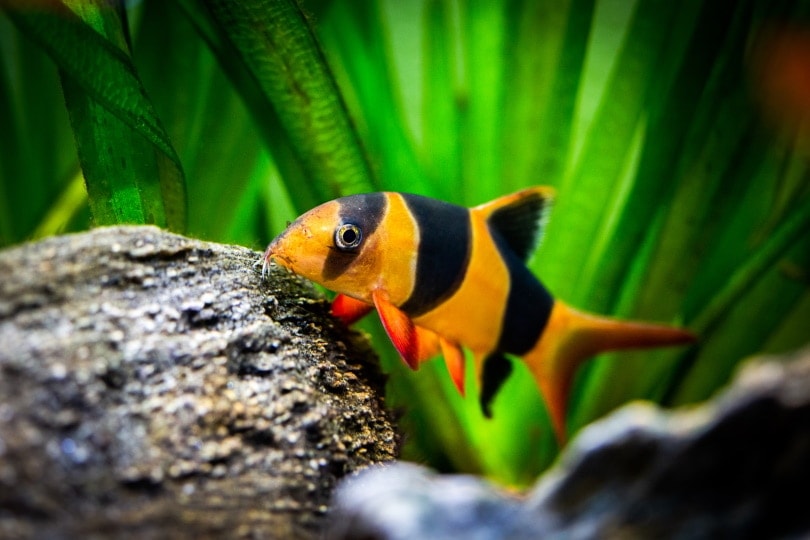
The clown loach is a tropical fish that feeds on hatchlings and even eggs that are found on surfaces like glass, rocks, or pieces of driftwood. The clown loach will also eat hatchlings of all snail species.
- Eats: Ramshorn, nerite, bladder, eggs, hatchling snails.
2. Pea Puffers
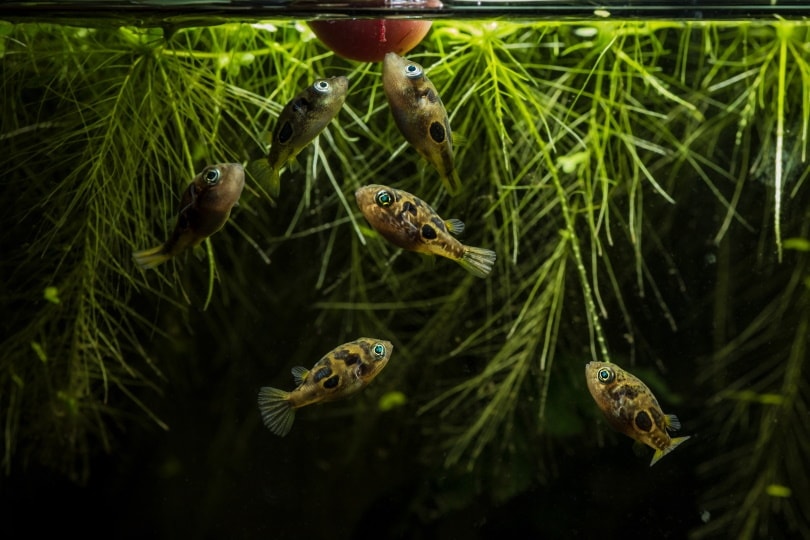
The pea puffer’s natural diet consists of small snails. They are beneficial to tanks that have large populations of small snails and hatchlings like the nerite, ramshorn, and bladder snail. Pea puffers are also used to control populations and leave the adults to be.
- Eats: Nerite, ramshorn, eggs, hatchlings, bladder snails.
3. Bala Sharks
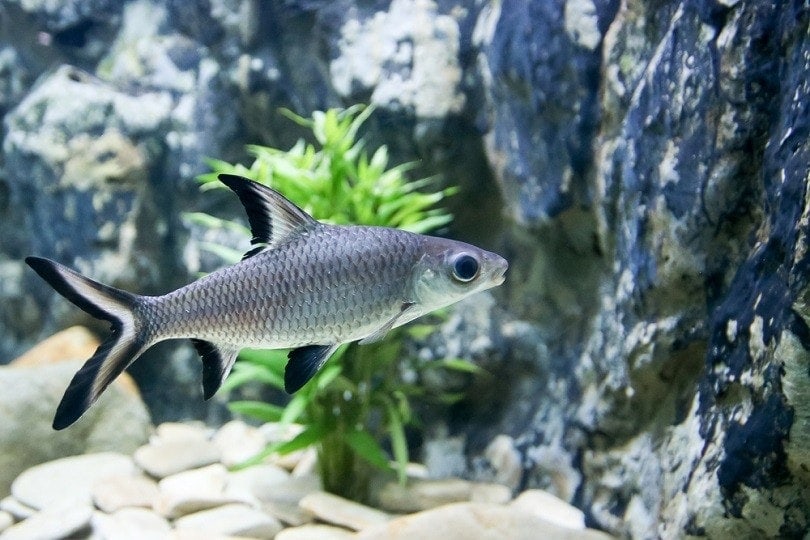
Bala sharks are large shoaling fish that will readily eat small to medium-sized snails. The snails they are most likely to eat are nerites, ramshorn, bladder, and apple snail hatchlings.
- Eats: Nerites, bladder, hatchlings, ramshorn snails.
4. Gourami
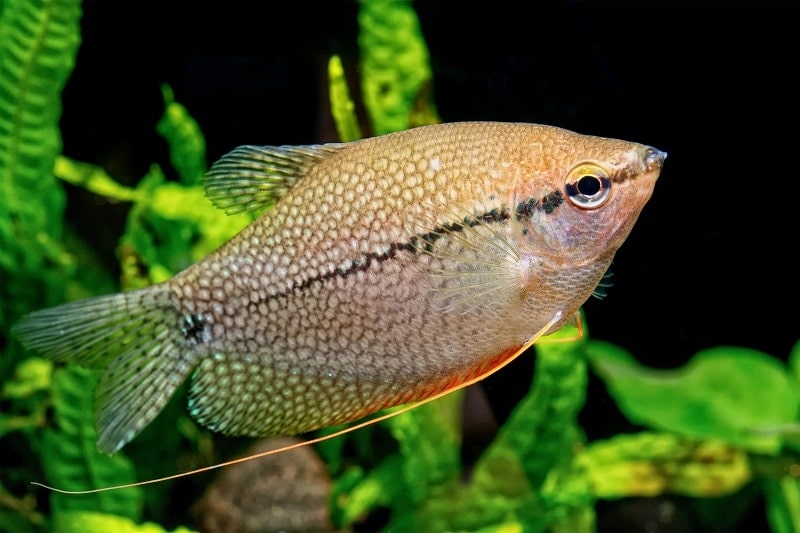
Gourami primarily feeds on small snails, eggs, and hatchlings. These shoaling fish are quite good at their job and snails make a delightful meal.
- Eats: Ramshorn, nerite, bladder, eggs, hatchling snails.
5. Cory Catfish
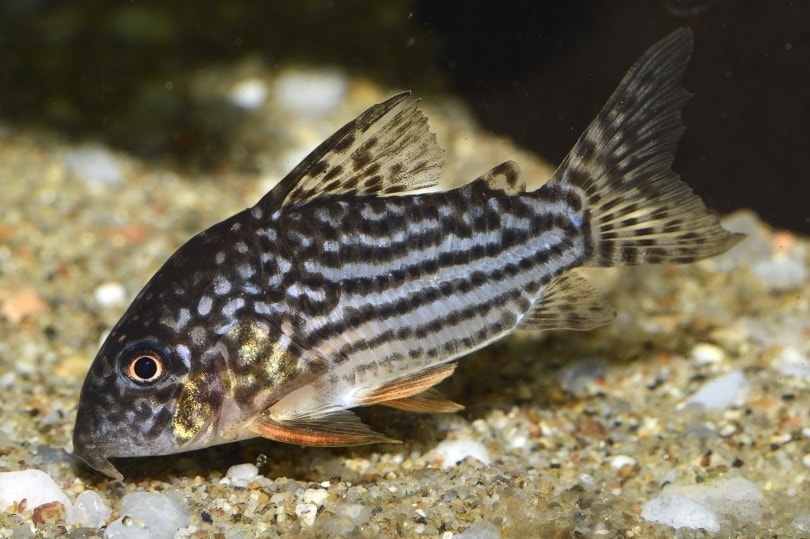
Corydoras are bottom dwellers that eat small snails. They do not eat larger snails and find no interest in snail eggs.
- Eats: Ramshorn, nerite, bladder snail hatchlings.
6. Yoyo Loaches
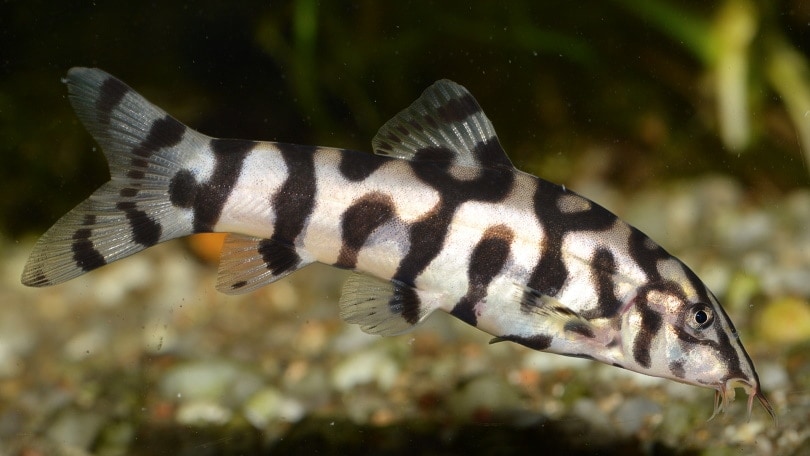
Yoyo loaches eat the snails right out of the shell. They also take an interest in eating small eggs. They do not eat large snails like mystery or apple snails.
- Eats: Bladder, ramshorn, trumpet, nerite, and hatchling snails.
7. Zebra Loach
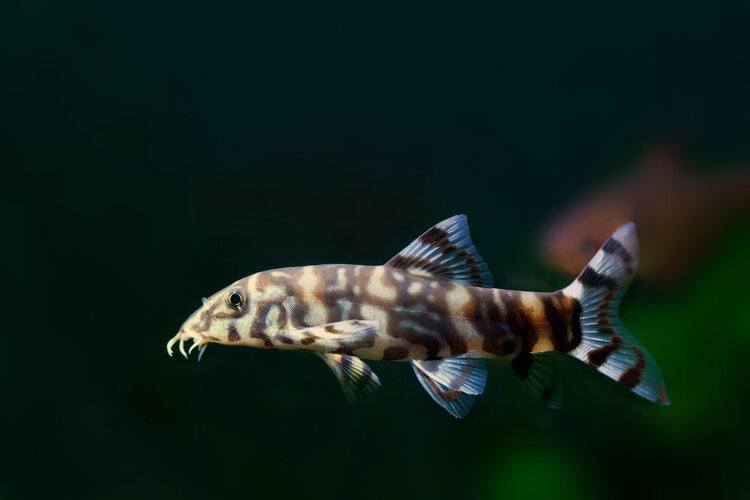
This fish is a variation of the clown loach. They eat similar types of snails and their hatchlings.
- Eats: Ramshorn, nerite, bladder, eggs, hatchling snails.
8. Cichlids
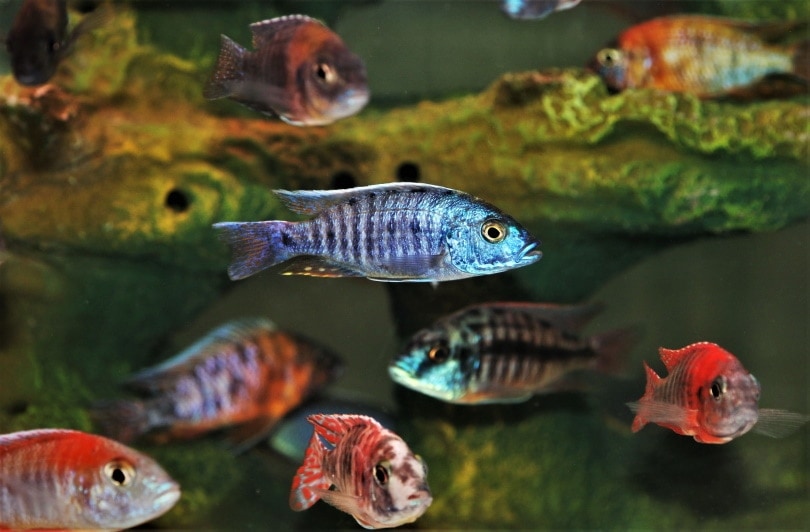
These are aggressive and large tropical fish that range from a variety of species. Blood parrot cichlids, Malawi mixes, and African cichlids eat snails right out of the shell, including larger snails.
- Eats: Young mystery and apple snails, ramshorn, bladder, nerite, trumpet snails, and hatchlings.
9. Oscars – Best for Large Tanks
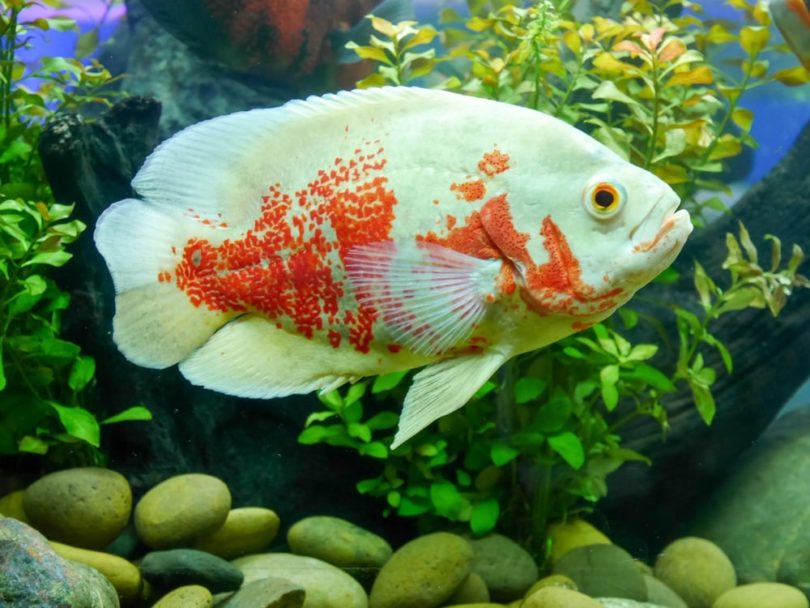
Oscars are very large and aggressive fish. They are known to eat both small and large snails. If they can catch the hatchlings, they will also eat them but due to their large size, they struggle to reach into small spaces where hatchlings hide in.
- Eats: Mystery, apple, ramshorn, nerite, trumpet, bladder snails.
10. Jack Dempsey
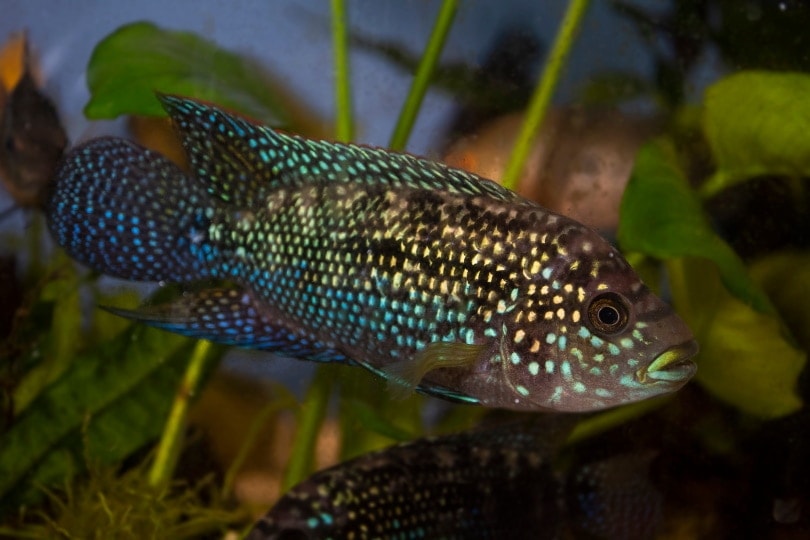
Jack Dempsey fish are by far the best fish to eat large snails. They reach large sizes, and an adult can fit a full grow mystery snail in their mouth. They will also hunt snails and eat mystery snail egg clutches.
- Eats: Nerite, ramshorn, apple, bladder, eggs, and bladder snails.
11. Betta Fish – Best for Small Tanks
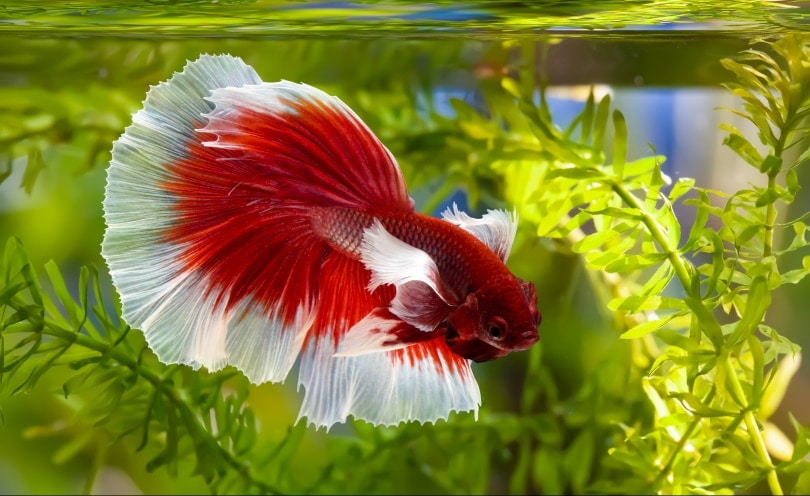
These popular small fish are perfect for nano tanks that have a large snail population. Adult bettas will eat small hatchlings and bladder snails. Since they are such small fish, they are at risk of bloat from eating too many snails.
- Eats: Bladder snails and hatchlings.
12. Khuli Loach
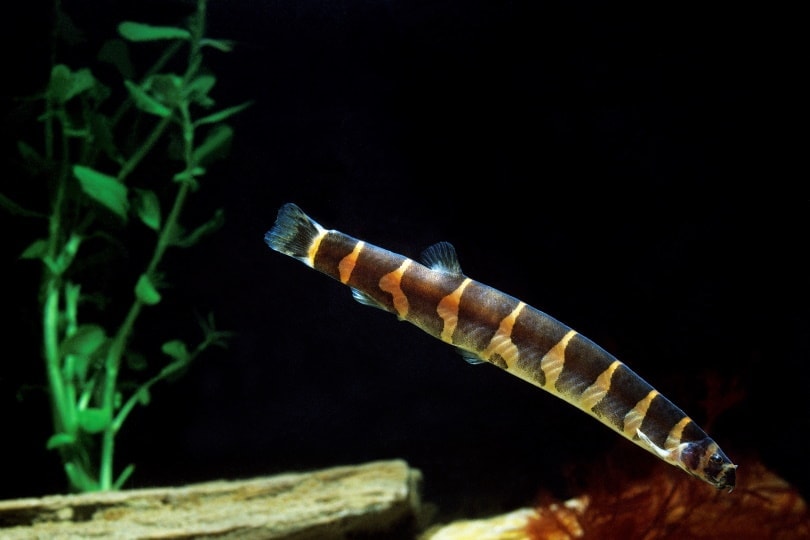
The Khuli loach is an eel-like tropical fish that eat snails out of their shell. They only eat small snails and hatchlings and not large snails like the mystery and apple snail.
- Eats: Ramshorn, nerite, bladder, hatchling snails.
13. Goldfish – Best for Large Tanks/Ponds
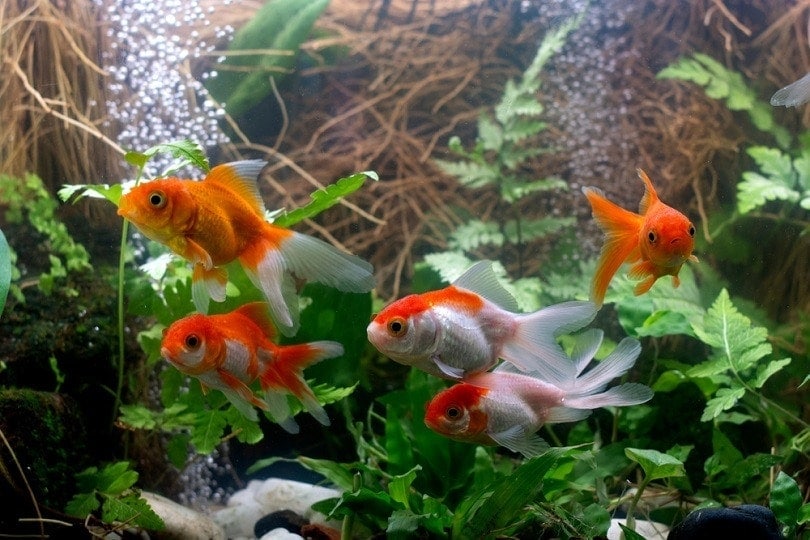
The goldfish is a colorful and popular cold-water fish that can live in both a pond and a tank. They primarily eat small snails, eggs, and hatchlings.
- Eats: Nerite, ramshorn, hatchlings, eggs, and bladder snails.
14. Striped Raphael Catfish
https://www.instagram.com/p/CIRgCl2sirV/
These catfish live along with the bottom level of the aquarium and eat small snails out of the shell. They will eat hatchlings whole and feed off dead snails.
- Eats: Ramshorn, nerite, bladder, and hatchling snails.
15. Trigger Fish

These tropical fish enjoy eating small species of snails. They can consume hatchlings that have soft shells, or they will rip at a snail so that they can eat the soft body of adult snails.
- Eats: Ramshorn, nerite, bladder, and hatchling snails.
16. Koi – Best for Ponds
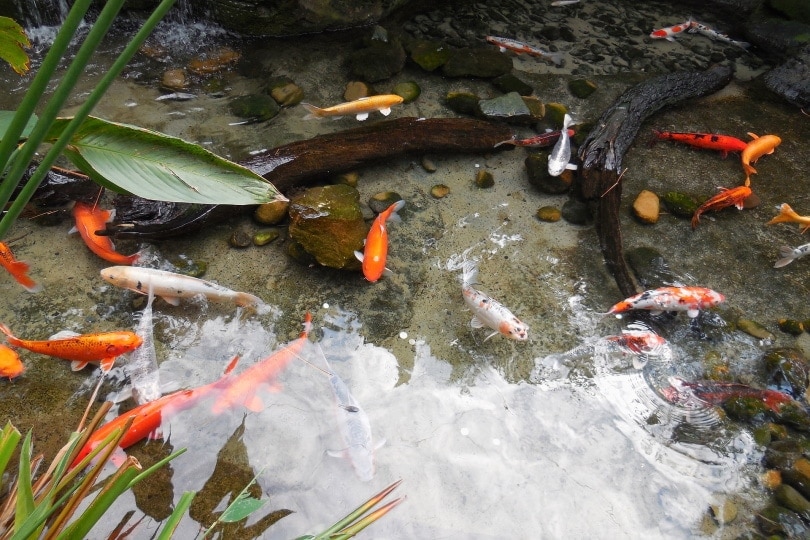
Koi are large growing cold-water fish that inhabit ponds. They are the best snail eaters for ponds. Due to their large size, they can easily eat snails whole or chew them out of their shell. They are effective at removing large snail populations within pond environments. They scavenge for snails amongst the substrate or on plants.
- Eats: Ramshorn, nerite, eggs, hatchlings, mystery, apple, bladder, trumpet snails.
Types of Freshwater Snails That Fish Eat
There are many different types of freshwater snails. Each snail has different characteristics and plays different roles in an aquatic environment. Some snails are admired by many aquarists and some aquarists frown upon the types of snails inhabiting their ponds or tanks. Some snails can be a good addition to an aquarium, whereas others may be unwanted.
It is important to determine the type of snail in your aquarium before you can find the right type of fish that will eat them or their eggs.
- Mystery snails are by far one of the most beloved snails in the aquarium hobby. They come in a range of delightful colors and grow to a decent size between 3 to 4 inches. Mystery snails lay clutches of eggs above the surface of the water, which makes it easy to dispose of eggs to avoid unwanted baby snails. They do not eat live plants, and this allows many aquarists to tolerate them.
- Our next favorite is the Nerite snail. They are small and attractive snails that have the advantage of not being able to breed in a pond or tank. This is because the eggs can only hatch in brackish water with a high salinity content, which many home aquariums lack.
- The Ramshorn is a colorful snail that grows to a small size. They are a favorite in planted aquariums and have the benefit of not eating live plants, but rather aiding in the clean-up of decaying plant matter. The only downside is that these snails breed rapidly, and their eggs are hard to see and much harder to remove.
- Bladder snails are one of the least attractive snails and have little to offer in a freshwater aquarium. They are not colorful and are one of the smaller growing snails. They are known to rapidly breed and overpopulate a tank or pond in a few weeks. They are commonly introduced into an aquarium through live plants and driftwood.
- Apple snails are one of the largest freshwater snail species. They wreak havoc on planted aquariums as they enjoy feasting on live plants. They grow to the large size of 4.5 to 5 inches and typically have a chestnut brown shell.
- The trumpet snail is a delightful beauty and is rare to find. They have an elongated mouth that looks like an elephant trunk and reaches a small size.
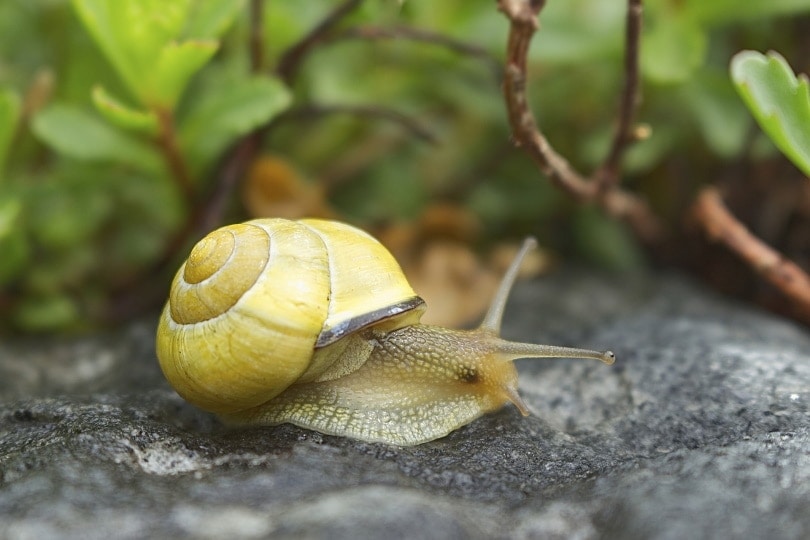
The Problem with Overpopulating Snails
Snails can negatively affect many aquatic environments. They may eat live plants within a few hours, and produce a large amount of waste that can lead to foul water chemistry. Some species, like the nerite, ramshorn, and bladder snail lay eggs around the tank that look unsightly. The eggs are sticky and cannot be properly removed.
Some pest snails, such as the bladder snail, can produce hundreds of babies that clutter the tank or pond and make it unenjoyable to view. The babies are so small to the point that they are hard to remove. Hatchling snails may also dig into the substrate and remain undetected for a while.
Aside from the negative aspect of freshwater snails, some species have advantages. Snails like the mystery, ramshorn, nerite, and trumpet snails make a good clean-up crew. They feed off dead plants that would otherwise be left in the water to decay which will result in high levels of ammonia. Snails also feed off fish waste and debris. Some snails even take a liking to algae which they will readily munch on to keep the aquarium algae-free.
Assassin Snails – Alternative to Fish
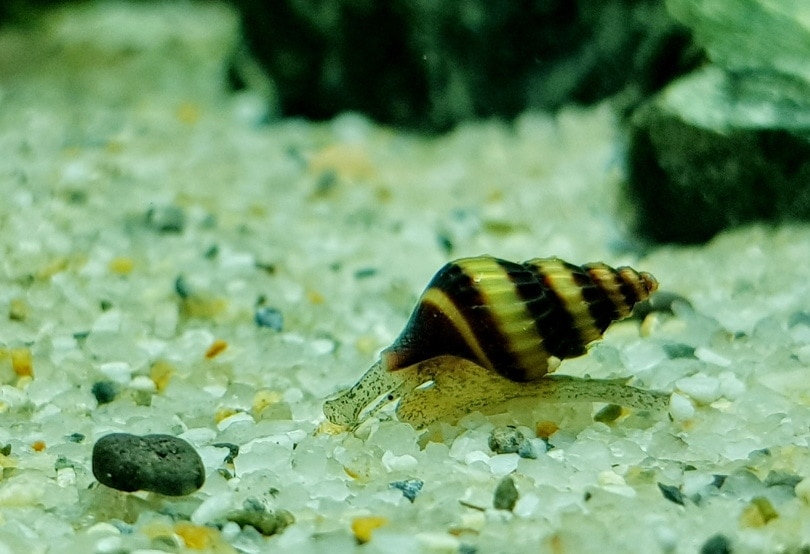
If you are looking for a simple alternative to remove snails from your tank or pond, the Assassin snail is perfect for the job. These are small snails with a banded black and yellow cone shell. They hunt and primarily feed on other snails. They eat the snail straight from the shell and then proceed to feed off the shell as a source of calcium.
Large populations of Assassin snails are the most effective. The only downside to these snails is that they will remain in the tank and breed even if other snails are dead. It is then recommended to use a fish to remove the leftover assassin snails.
Disposing of Snail Eggs, Hatchlings, or Large Snails (Humane Methods)
Snail eggs
Snail eggs can be disposed of by blunt force. Place the eggs in a Ziploc bag and then use a heavy object to crush them instantly. If that is too difficult to go through with, you can place the Ziploc bag of eggs in the freezer for 3 days and then throw it away in an airtight container.
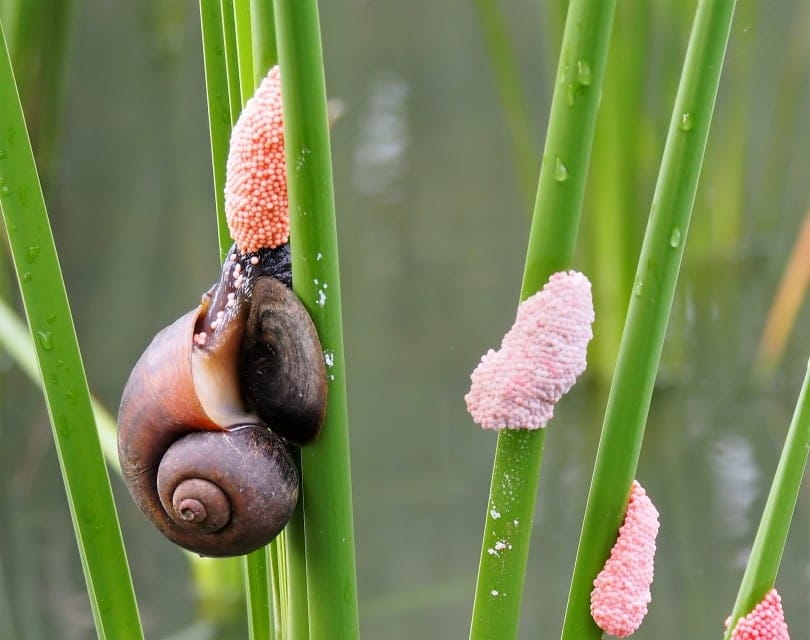
Hatchlings
Hatchlings can be lured into a snail trap with tasty food in the center of the trap. The snails will enter but be unable to leave and you can then remove them and rehome the snails.
Large snails
Large snails like the mystery or apple snail can be hand-picked out of the tank and rehomed to another person who doesn’t mind having snails in their tank. Your local fish store may also be willing to take in large snails for a small fee.

Conclusion
The best fish for controlling snail populations are the Khuli loach, goldfish, koi, clown loaches, and cichlids. These fish are the most effective at removing eggs, hatchlings, and some adult snails. Assassin snails are a good alternative to fish and sometimes do a better job at it than most fish. Keep in mind that the fish may take a while to remove snails and the whole population may not be completely gone.
Ensure each plant or piece of wood you place in the aquarium has been dipped in hydrogen peroxide before being placed in. Woods should be soaked in boiling water to remove eggs and any snail hitchhikers.
Featured Image Credit: Arunee Rodloy, Shutterstock

